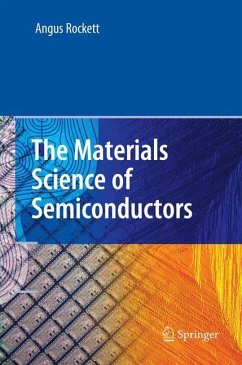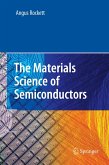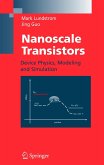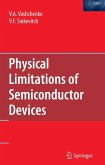This book describes semiconductors from a materials science perspective rather than from condensed matter physics or electrical engineering viewpoints. It includes discussion of current approaches to organic materials for electronic devices. It further describes the fundamental aspects of thin film nucleation and growth, and the most common physical and chemical vapor deposition techniques. Examples of the application of the concepts in each chapter to specific problems or situations are included, along with recommended readings and homework problems.
OBJECTIVES The primary purpose of this book is to convey insight into why semiconductors are the way they are, either because of how their atoms bond with one another, because of mistakes in their structure, or because of how they are produced or processed. The approach is to explore both the science of how atoms interact and to connect the results to real materials properties, and to show the engineering concepts that can be used to produce or improve a semiconductor by design. Along with this I hope to show some applications for the topics under discussion so that one may see how the concepts are applied in the laboratory. The intended audience of this book is senior undergraduate students and graduate students early in their careers or with limited background in the subject. I intend this book to be equally useful to those teaching in electrical engineering, materials science, or even chemical engineering or physics curricula, although the book is written for a materials science audience primarily. To try to maintain the focus on materials concepts the details of many of the derivations and equations are left out of the book. Likewise I have not delved into the details of electrical engineering topics in as much detail as an electrical engineer might wish. It is assumed that students are familiar with these topics from earlier courses.
OBJECTIVES The primary purpose of this book is to convey insight into why semiconductors are the way they are, either because of how their atoms bond with one another, because of mistakes in their structure, or because of how they are produced or processed. The approach is to explore both the science of how atoms interact and to connect the results to real materials properties, and to show the engineering concepts that can be used to produce or improve a semiconductor by design. Along with this I hope to show some applications for the topics under discussion so that one may see how the concepts are applied in the laboratory. The intended audience of this book is senior undergraduate students and graduate students early in their careers or with limited background in the subject. I intend this book to be equally useful to those teaching in electrical engineering, materials science, or even chemical engineering or physics curricula, although the book is written for a materials science audience primarily. To try to maintain the focus on materials concepts the details of many of the derivations and equations are left out of the book. Likewise I have not delved into the details of electrical engineering topics in as much detail as an electrical engineer might wish. It is assumed that students are familiar with these topics from earlier courses.
From the reviews:
"This textbook on semiconductors for students at advanced undergraduate or graduate level covers the basis of electronic band structures, engineering of alloys, and the effect of defects. Concentrating on semiconductors materials science rather than devices, Rockett also includes discussion of organic electronic materials, amorphous semiconductors, and methods for growth and deposition. Each chapter includes recommended reading suggestions and problems for study." (Materials Today, Vol. 11 (5), May, 2008)
"The 12 summarized chapters of The Materials Science of Semiconductors by Rockett ... provide excellent coverage for practicing engineers or students interrelating the underlying materials considerations with semiconductor devices. Each chapter contains diagrams, problems, substantial references, and additional readings; the book also includes an appendix and a dozen tables. ... Summing Up: Recommended. Upper-division undergraduate through professional collections." (S. M. Pilgrim, Choice, Vol. 46 (2), October, 2008)
"This textbook on semiconductors for students at advanced undergraduate or graduate level covers the basis of electronic band structures, engineering of alloys, and the effect of defects. Concentrating on semiconductors materials science rather than devices, Rockett also includes discussion of organic electronic materials, amorphous semiconductors, and methods for growth and deposition. Each chapter includes recommended reading suggestions and problems for study." (Materials Today, Vol. 11 (5), May, 2008)
"The 12 summarized chapters of The Materials Science of Semiconductors by Rockett ... provide excellent coverage for practicing engineers or students interrelating the underlying materials considerations with semiconductor devices. Each chapter contains diagrams, problems, substantial references, and additional readings; the book also includes an appendix and a dozen tables. ... Summing Up: Recommended. Upper-division undergraduate through professional collections." (S. M. Pilgrim, Choice, Vol. 46 (2), October, 2008)








